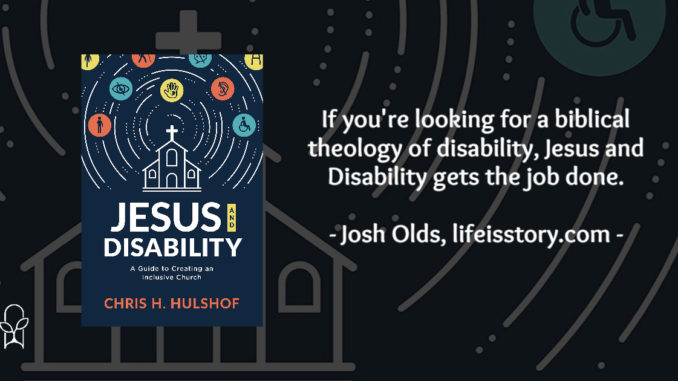
Published by B&H Academic on July 1, 2022
Genres: Academic, Non-Fiction, Theology
Buy on Amazon
Goodreads

Stemming from personal, pastoral, and academic interests, author Chris Hulshof seeks to fill a gap in the resources available that address practical and theological concerns related to disability, specifically in the church. Through examining primary biblical texts dealing with disability, Hulshof shows how Jesus’s involvement with the disabled can be instrumental in laying the foundation for disability-inclusive church leadership. Jesus and Disability provides a blueprint for how churches and their leaders can become disability friendly, serving those in the church and in the broader community.
During his earthly ministry, Jesus was deeply and personally involved in the lives of the disabled. In all four Gospels, from the beginning of his ministry to the end, Jesus heals the disabled—but more importantly, he treats them as people made in the image of God. In Jesus and Disability, Chris Hulshof uses these biblical accounts to lay a foundation for disability-inclusive church leadership and practice. The book is adapted from his 2017 doctoral dissertation “Jesus and the Disabled: Inclusive Leadership and the Disability Effective Pastor” and Hulshof’s academic interest in disability inclusion comes from being the dad of a son with disabilities. That personal and academic passion shines through this book as Hulshof pleads with churches to consider the example of Jesus when thinking about including and serving the disability community.
Ultimately, I found Jesus and Disability: A Guide to Creating an Inclusive Church to fulfill half of its titular promises. The Jesus and Disability part the book handles exceptionally well. Eight of the book’s twelve chapters are intentionally focused on a particular biblical narrative and Hulshof interacts with several different commentaries to flesh out his exegesis of those passages. What the book doesn’t do quite so robustly is live up to its subtitle, “A Guide to Creating an Inclusive Church.” While Hulshof touches on the subject by way of giving application from the biblical narratives, that application is often very general and broad. The practical application from the narrative of the paralyzed man at Capernaum is simply that “forgiveness and inclusion be extended to the disabled.” Which…yeah…but this is hardly new or actionable knowledge. In the next chapter, covering the narrative of the man with the withered hand, Hulshof concludes “having a disability does not disqualify or prevent a person from stretching out and taking hold of the gift of God’s grace.” Again, very true, but this doesn’t do much in the way of creating an inclusive church. Rather, it simply tells us that church should be inclusive.
Jesus and Disability does get more practical in its concluding chapter, where Hulshof distinguishes between four different models of ministry. But the derived-from-a-dissertation tone keeps the information from seeing personal or practicable. Instead, Hulshof offers four different ways disability ministry is done rather than advocating for a particular one or providing practical examples of each model. If you’re looking for a biblical theology of disability, Jesus and Disability gets the job done. What it lacks is the practical blueprint for moving from theory to practice.
